Art & Exhibitions
Why Swizz Beatz Is Welcoming A.I. in Art-Making
The record producer has collaborated with Belgian artist Arne Quinze on a psychedelic garden in Venice.
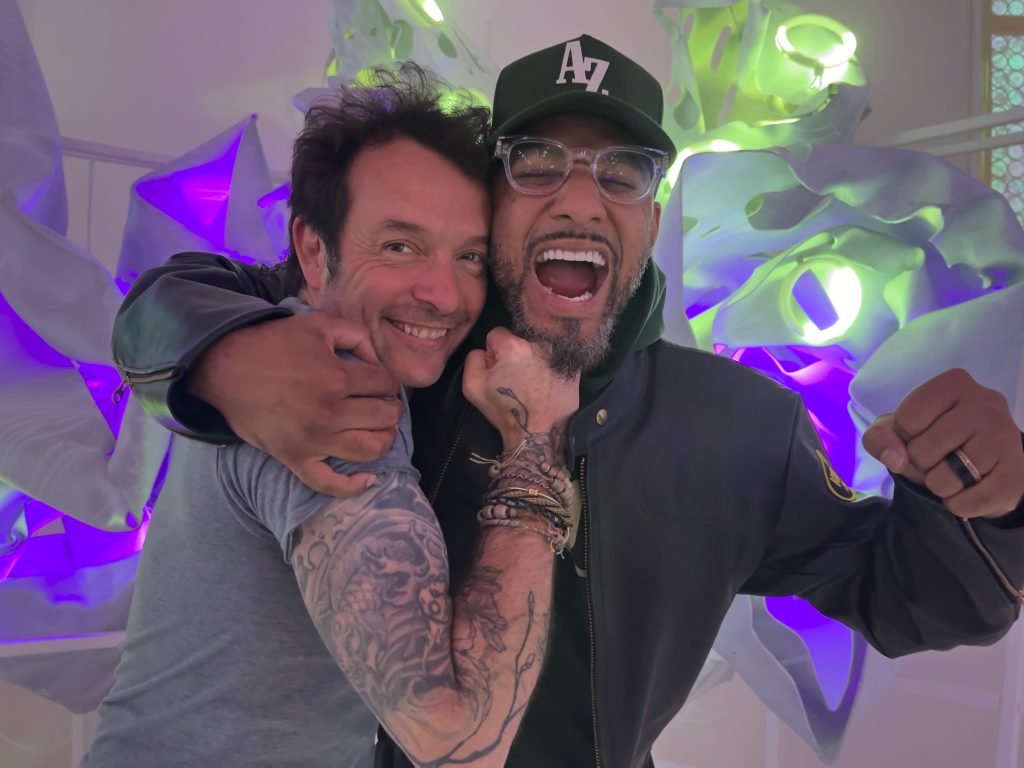
Beyond the sensory overload of the national pavilions in the Giardini della Biennale, there’s another trippy garden in Venice.
This enclave nestled inside a 16th-century church is the brainchild of the Belgian artist Arne Quinze and the U.S. producer, musician, and art collector, Swizz Beatz. Their exhibition titled “Are We The Aliens_” showcases Quinze’s bold exploration into glass, ceramics, and bronze alongside A.I.-generated visuals. At its core is a collaborative sonic installation: an immersive aluminum sanctuary, inviting visitors to recline and absorb its dynamic soundscape.
We caught up with the artist and musician to hear more about their collaboration, marrying sound to art, and taking a leap with the next generation of creators.
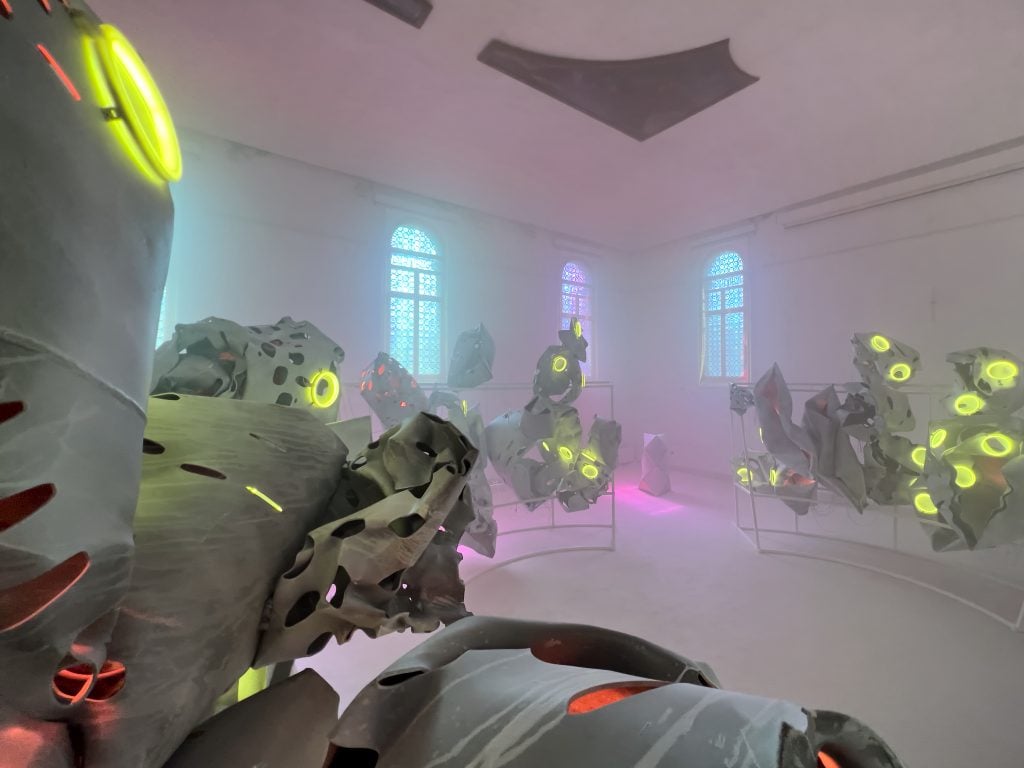
Arne Quinze and Swizz Beatz, Sonic Levitation. Photo by Dave Bruel for Arne Quinze. Courtesy of Konig Galerie.
Arne Quinze: We finished installing a half hour ago. The experience is fresh—we just came down from sitting in our garden. Even after making this piece, I’m still discovering. I’m still enjoying. I’m still traveling, I’m still in wonder at what we did.
Swizz Beatz: The collaboration came about because we have a brother in between us but we’ve been a fan of each other’s work for many years.
AQ: The first time I came here was two, three years ago, to check the location, because it’s difficult to find the right location in Venice. After I found it, I started to make the molds and I flew to San Diego and I showed him the model, and we were sitting around the model and talking.
SB: His model, it’s still on the table where he left it. It’s a model of the sculpture that I was looking at while I was doing the music, vibing, listening to music in the speakers and just asking: How would the sound look coming out of the sculpture? How would you feel?
AQ: The concept of the exhibition title “Are We The Aliens_” came up because we have the same view on the world, from the discussions that we had. The theme is actually questioning ourselves. We need to learn to approach again our planet with beauty and with our art and to communicate and to embrace and to live in harmony. That’s the message. Because on this planet, there’s just one race, one species as humans, we are all the same.
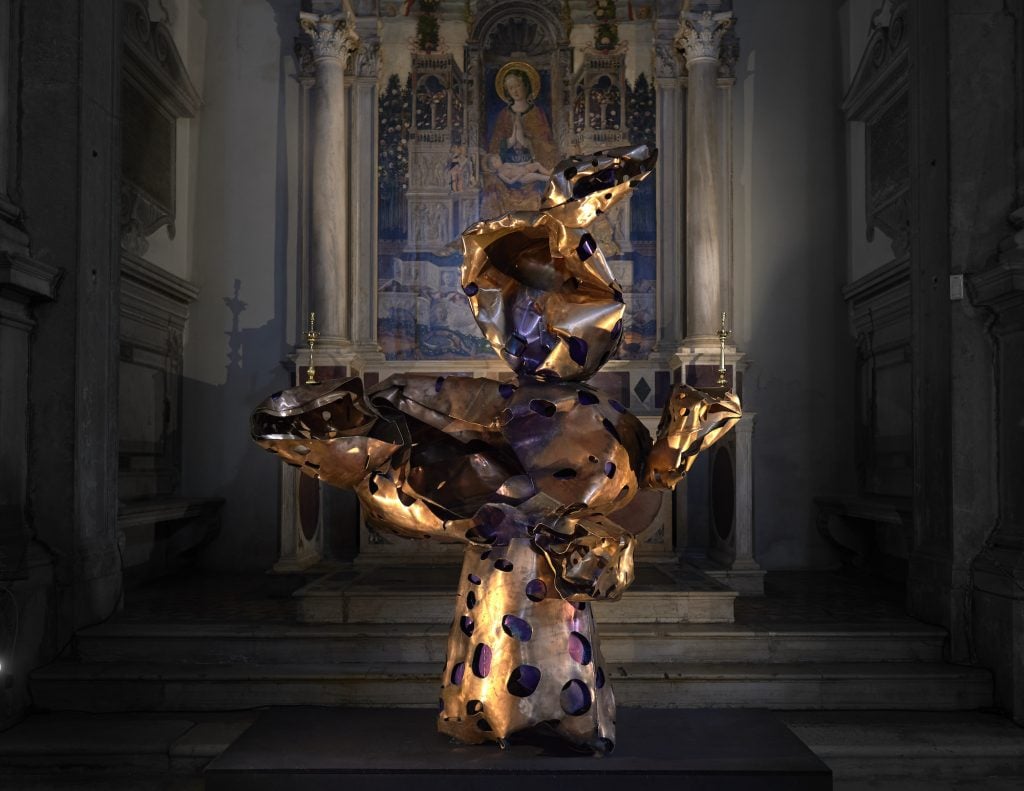
Photo by Dave Bruel for Arne Quinze. Courtesy of Konig Galerie.
SB: This is my first, I like to call it sonic installation score, to this amazing sculpture masterpiece. I’m usually scoring for a movie or doing music-production for a song. This was different because the medium was different. The energy is different. His vision is different. So, it was a pure collaboration. I went through it, like, three or four times and then a last time because we’re still learning each other. Usually, if I’m producing something I’m taking the lead, but you know, he’s the main producer as the artist for his vision, I had to kind of like walk side-by-side, see if this works, right? And then eventually I was like, “Okay, we can jibe from here and then we got to a masterful place together.”
AQ: I think we are here to bring beauty and I think through beauty we try to communicate and bring us all back together. When you see a white, flower field, you need to embrace that and to learn to see that again and that will bring the music and the art back into our lives—and that will reunite us. I think this is important.
SB: We also want people to be a little uncomfortable. Because when you create intensity, when it smooths out, you can actually feel everything else happening. If we had it just with garden sounds, you wouldn’t really notice the change—it’s a blackout in your mind. So, this is designed to test all your senses.
The hardest thing with scoring this was actually: How do you keep changing the direction, and keep it interesting to keep playing after this period of time? I started with soundscape that would put you to sleep. Then I started to get a little experimental, put the rough ends on it, and then started formatting it so we go, low, high, low, high, high, low, low, high, low—and it’s almost not calculated. Because you think, “Oh, here comes a big sound.” You think it’s that and it just goes into a drum and it’s playing with your senses.
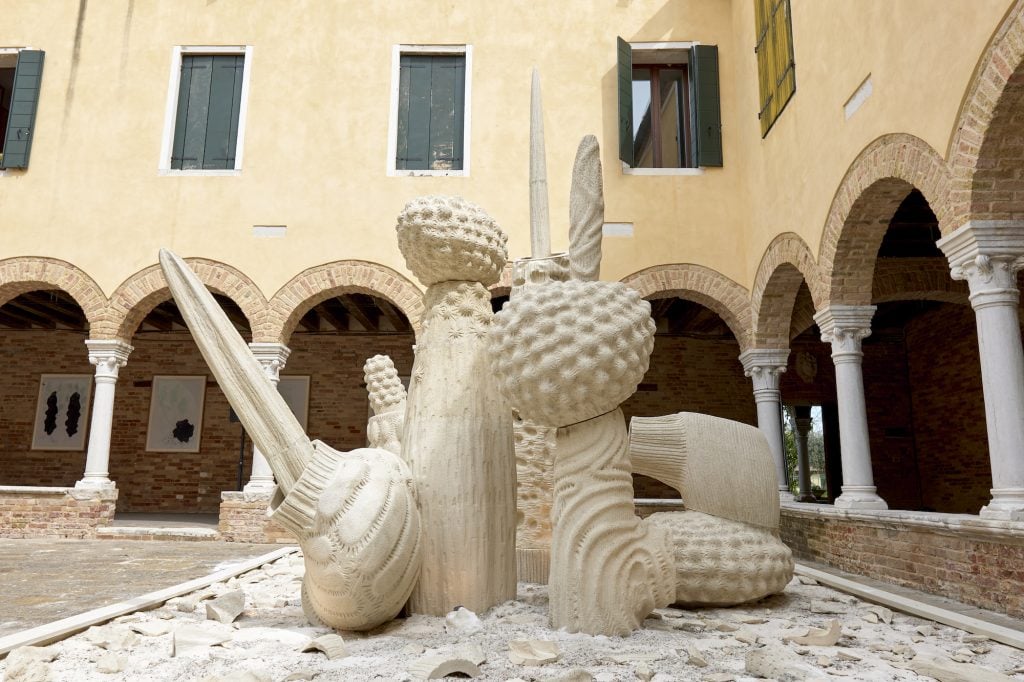
Arne Quinze, Ceramorphia. Photo by Dave Bruel for Arne Quinze. Courtesy of Konig Galerie.
AQ: I think the thing that we did together is not 2D, it’s not 3D. I think it’s beyond 4D. And that is all the layers that you will see. It’s a magic garden when you dive in. I’ve been working in installation for 30 years now, I have a lot of experience. What I really like with this one, I’m always in places, like somewhere in the middle of the jungle or in the desert or far away and making big monumental installations. This is a very intimate garden. You come in our secret garden.
We used many things to put it together, and we asked artificial intelligence to be as artificially intelligent as possible. Because I’m questioning, are we the humans and they are the aliens—or are we the aliens and they’re the humans? Because artificial intelligence is maybe the first new species on this planet. And it’s everywhere, it’s in your microphone, it’s in your telephone, and we have to learn to live with it. Still, I think artificial intelligence is far off being able to produce the emotions that we did here.
SB: Well, for me, I’m not bothered by using A.I. in many ways. You can use it for speeding up processes. But the thing is when you don’t have talent and you use it, it’s a disaster. But if you do have talent and you have a plan to enhance something that’s already great but that would have taken you probably like six months, it could take you four hours. My son has been writing this animation movie for eight years and the hardest thing was him finding the designer for his characters. Now, he has almost all of his characters done in one month, when this would have cost hundreds of thousands of dollars. So, in these ways it’s good but I think that it should be in the right hands.
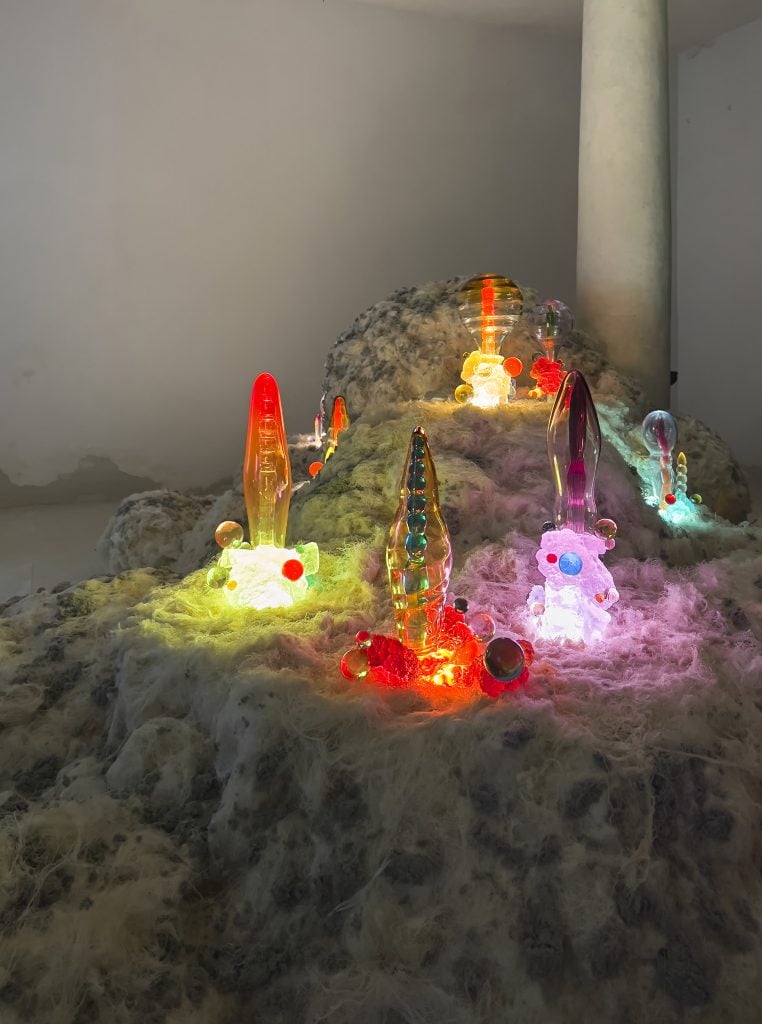
Arne Quinze, Impact Glass. Photo by Dave Bruel for Arne Quinze. Courtesy of Konig Galerie.
AQ: I think artificial intelligence will also challenge us to take the next step. I’m not afraid of that, not afraid. It’s a new generation. I think we need to dive into that, to use that.
SB: The world is a smaller place now because of technology. I think the creators are now getting more confident, of stepping outside and not being afraid, which is going to push the art little further to even like what you have seen from us. And I’m seeing artists, who would have normally tried to put their hands behind their back for the perfect curator or the perfect gallery or the perfect museum to notice them. But now, I’m seeing more of the art world, they’re like, “Listen, if I get in a museum, I’m cool with that. If not, I had fun doing the piece.” And this is how you keep art alive, is by taking the risk. And I love that I see people around the world taking the risk now and I hear all type of stories of people telling me their new ideas. This is good.
AQ: Yeah, and you see also our kids, the next generation, they have possibilities that we never had. They are diving into a new world—I’m so encouraged to see what they will produce.
SB: Yeah. Because you can’t really produce for the hype; you have to produce for the passion. It’s a disaster when I see artists producing for the hype, and getting misled and their market is ran up and then one bad sale and you don’t hear from these people again—and nobody’s helping them get back on their feet. And so, I encourage all artists to take their time and really do the passion and don’t worry about the hype. Worry about the longevity and what you can change in that period. The hype, that’s going to come and go.
I apply that to myself as well, because being in the music industry is a big hype business, so naturally you bring that with you anyway. With art, when I first started, I collected for the wrong reasons. I was collecting for the hype so I was just going for the big names, just to impress people coming to the house. And then I was like, “I don’t need all this.” I need to be able to meet the artists, treat them as family, you know, not be so transactional. Most people are very transactional when they’re talking to the artist. What’s in their mind is “how can I get a piece?” instead of “is this artist at peace?” Emotionally, spiritually, physically, all of these things.
AQ: But you also worked here as an artist. It’s really not just as a composer or as a musician—a musician is an artist but this is different. You are touching material, we are sculpting together. That is how I see it.





